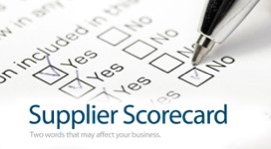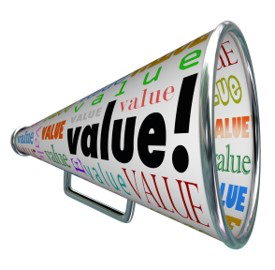All too often sellers view Procurement staff as the dark forces that obstruct the selling process. They are the “black hats” that delay or stop sales. They are the commandoes of commoditization. Some sellers subscribe to the belief that Procurement is obsessed with price discounts and turns a “blind eye” to obvious product value. Consider setting aside this arcane misperception of today’s Procurement executive and replace it with a strategy that builds an environment of collaboration. Partner! Don’t polarize!
To partner with procurement, there are five steps that you may wish to consider.
-
Identify the Organizational Context & Expectations that Drive Procurement Activity.
How is Procurement staffed? What level of technical and product expertise do they possess? To whom in the executive suite do they report? Step into their role and try to understand the issues that are driving their activity from the executive level. Are they being mandated to drive down operational expenses? Are there issues with efficiency? Are they facing industry “headwinds” like rising production costs or decaying revenue streams? Oftentimes, Procurement finds itself in a struggle among competing internal projects—all requiring immediate action and all driven by sponsors at the executive level.
Advice: Find or create an organizational chart for Procurement; include all reporting relationships, specializations and team affiliations. Note those who have expertise regarding your product or solution. Identify individuals who are accessible, those who are helpful informants and those who are difficult to reach. Build a network of relationships just as you would if you were selling to the executive suite. Every account visitation should focus on building bridges and expanding your network.
-
Discover Procurement’s Vendor Scorecard & Take Steps to Improve Your Company’s Standing.
 Most organizations use a scorecard to assess the quality of their suppliers and it goes well beyond price. There are many reasons why your company may be rated low on a vendor’s scorecard including a low fill rate, partial shipments, price variances, price increases, late deliveries, invoice errors and low Perfect Order results.
Most organizations use a scorecard to assess the quality of their suppliers and it goes well beyond price. There are many reasons why your company may be rated low on a vendor’s scorecard including a low fill rate, partial shipments, price variances, price increases, late deliveries, invoice errors and low Perfect Order results.
Advice: Get your own “house” in order. If you want to collaborate with Procurement have a candid discussion about their vendor scorecard and explore steps you can take to be a better supplier. Treat Procurement as having the ultimate vote on “customer experience.” Challenge your internal customer support team to help you improve your vendor scorecard in each functional area.
-
Help Procurement Build a Compelling Business Case for Your Solution.
Most sellers hate to build business cases—it is time consuming and complicated. Instead many just borrow a case built by another representative using different KPIs and different assumptions. “After all, one customer is pretty much like the last.” Wrong! Each Procurement team will have different product specifications and Key Performance Indicators. One may measure a product’s Return On Investment, a second may focus on Total Cost of Ownership while a third may be concerned with Payback.
Advice: Early in the buy-sell process meet with a Procurement representative to determine the KPIs, preferred formula and necessary format. Also, when you have completed the business case, schedule a time to meet with your liaison, debrief on your results and get feedback. If the situation changes, you will be able to adapt before it’s too late.
-
Craft & Employ Value Messages That Resonate with Procurement.
 Savvy sellers should not succumb to the assumption that Procurement is only interested in price. More likely than not, Procurement will focus on price because it is easily measured and resonates with the executive suite. Every dollar saved by Procurement drops straight through to the bottom line.
Savvy sellers should not succumb to the assumption that Procurement is only interested in price. More likely than not, Procurement will focus on price because it is easily measured and resonates with the executive suite. Every dollar saved by Procurement drops straight through to the bottom line.
Most Procurement buyers focus on the relationship between a product or solution and critical (and measurable) corporate objectives. Value messages that connect the two in a clear, reasonable way are often well received. So the question becomes: “What corporate objectives can be measurably served by your product?” Build messages that clearly articulate the connection. In any sale, approximately 25% of the value provided to a buyer in purchasing a product is attributable to intangibles.
Advice: First, uncover hidden tangible benefits of your product or solution. A good place to start is to ask your customers to identify soft benefits. They can lead you quickly to payoffs discovered in their organization and provide you testimonials to support quantification. Measuring value isn’t the sole responsibility of sales. Enlist marketing, sales operations, customer service and finance to help quantify and document value.
Second, build “personas” for all Procurement personnel and executives. Then craft value messages that connect with their perception of business, financial and personal benefits. Many successful sales teams rely on “playbooks” to provide a range of value messages that resonate with different buying influences.
-
Assist Procurement in Understanding the Cost of “Doing Nothing” or “Not Changing.”
Across all industries there is a tendency for sellers to overlook the power, attractiveness and internal support that can mobilize around “doing nothing” or “not changing.” Doing nothing can cover a broad spectrum of options that range from a decision to not award the contract at this junction to continue servicing a project or product through internal resources or retaining a familiar (but flawed) supplier.
All too often sellers are seduced (by RFPs and sales calls) into believing that all buying influencers—including Procurement–are committed to making a change. Make no mistake “doing nothing” or “not changing” can be a powerful and safe competitive option. Sellers need to build a compelling case against the status quo with a strong combination of analytics, documentation and value messages that will appeal to Procurement.
Advice: “Doing nothing” has two attractive benefits to Procurement and internal buyers: it is easy to predict costs and calculate risks. Your first task is to address any suspicion of risk associated with your product or solution that can make “doing nothing” seem like a positive option. Are there implementation issues, training concerns, production challenges or delivery obstacles that you can address quickly and forcefully? Your challenge is to share with Procurement an “insurance policy” that mitigates risk.
A second task is to quantify the costs associated with “no change.” Is the buyer trying to circumvent costs in the current year? Are there financial options that you can offer that are unavailable in the status quo? What are the unseen costs of deferring change? This means you have to understand and document the full range of costs embedded in the status quo. Help Procurement construct a credible comparison that can be shared and defended in executive level briefings.
Parting Thoughts
Savvy sellers should understand that Procurement can dramatically improve an organization’s bottom line. Every dollar, euro, pound etc. saved during the negotiation with suppliers goes straight to the bottom line. Procurement also improves working capital and, therefore, makes the balance sheet look better. As a result, the Chief Procurement Officer is often the “best friend” of the CEO. They are a major player in every institution and should be treated with respect.
Sellers would be wise to determine how to make Procurement an ally and not view them as the enemy or a necessary evil.
For questions or to engage us please contact us at info@strategicdynamicsfirm.com or visit our website at www.strategicdynamicsfirm.com


